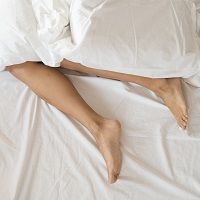Article
Sleepwalkers Feel No Pain
Author(s):
Somnambulism, commonly known as sleepwalking, is a disorder that affects 8.4 million adults in the United States (one of which is Friends actress Jennifer Aniston). But as it turns out, these individuals do not feel pain from an injury they acquired during an episode while they are actually sleepwalking.

Somnambulism, commonly known as sleepwalking, is a disorder that affects 8.4 million adults in the United States (one of which is Friends actress Jennifer Aniston). But as it turns out, these individuals do not feel pain from an injury they acquired during an episode while they are actually sleepwalking.
“We report here, for the first time, an analgesia phenomenon associated with sleepwalking,” principal investigator Regis Lopez, MD, a psychiatrist and sleep medicine specialist at Hospital Gui-de-Chauliac in France, said in a news release.
Lopez and colleagues from the American Academy of Sleep Medicine assessed the paradox in 100 patients diagnosed with sleepwalking compared to an equal amount of healthy controls. The sleepwalkers — 55 of which were males and an average age of 30 – completed questionnaires and physicians evaluated pain complaints.
Forty-seven of the sleepwalkers reported that they had experienced at least one injury while sleepwalking. However, only 10 of them woke up immediately from the pain. While the other 37 patients (78.7%) eventually felt pain, either later that night or the next morning when they woke up, they did not feel pain during the actual sleepwalking episode.
The team cited a patient who jumped out of a third-floor window during a sleepwalking episode, endured multiple fractures, and didn’t feel pain until waking up later that night. Another patient was sleepwalking and climbed his roof, fell off, broke his leg, but didn’t wake up until the next morning.
Now you may be thinking… how is this possible?! Well, sleepwalking causes disassociated brain activity and it appears that this is connected to a lower pain response, according to the analysis in SLEEP.
The study revealed another key finding: sleepwalkers are more likely to have headaches. Actually, they are four times more likely to have a history of headaches and 10 times more likely to experience migraines (after adjusting for factors such as depression and insomnia).
So the team found something quite interesting — sleepwalkers tend to have more head pain, but don’t feel pain from a sleepwalking injury during the episode.
“We hypothesize that a dissociate state of arousal may modify the components of sleep-wake behavior, consciousness, and also pain perception,” Lopez concluded.





